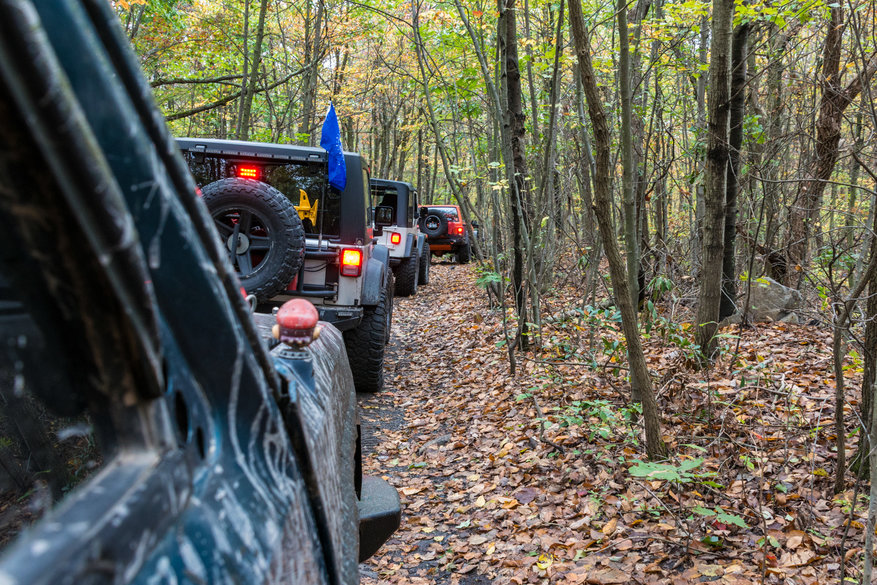by Matt Konkle
Torque Editor-in-Chief
It may be just an afternoon in the woods. Or perhaps some time with friends or your Jeep club buddies. Maybe it is a trip you've planned to an off-road park or destination. Whatever the reason, spending that time off the asphalt and in the woods with family, friends, or maybe people you just met for the day, is a great way to really revitalize your energy over these summer months.
That day trip (or longer) to the trail, or off-road park, allows you to check out nature and gives you access to scenery you really won't find anywhere else. It also provides a jolt of confidence, and a feeling of teamwork, when your group works together overcoming all those obstacles in your way. Plus it gives you some insight into your vehicle that you simply won’t get from everyday driving.
Over the past few years, more people than ever have decided time away from the everyday routine is a good thing. A necessary thing. And they have explored parks, trails and off-road destinations all over the country in record numbers.
So if your plans are to take up that endeavor this summer, here are five things you should really explore and accomplish before turning that key and heading out.
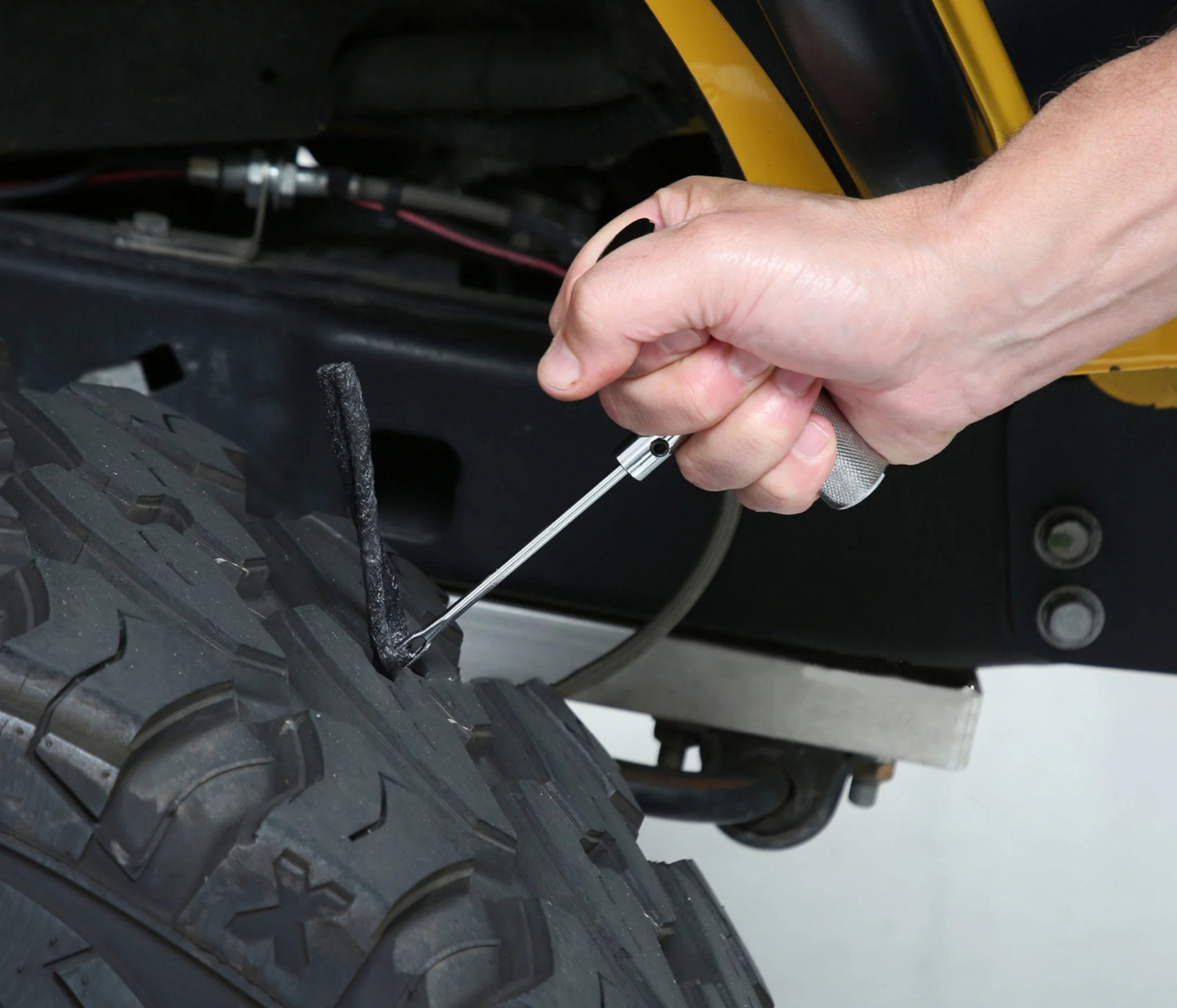
Tire And Fluid Check
Most of you are probably pretty good about checking your vehicle’s gas gauge before heading out, and making sure you have enough to get where you are going. That way you’ll know if you have to make a quick stop at the gas station.
Well, before you shut the door and fire up your Jeep for some time in the woods, it really makes sense to do a few other checks on some equally important things. Namely your tires, wiper fluid and engine coolant.
Because Jeep tires are larger than car versions, they have more surface area that can roll over (and pick up) road debris. And this issue only increases when you upgrade to even larger aftermarket all-terrain or mud-terrain tires.
Over the years, we’ve picked up all kinds of metal shards, nails, screws and other stuff in our tires. Usually, it is not an issue as the thick rubber prevents most stuff from causing problems. But once in awhile, larger debris can puncture through — causing a slow leak or quickly deflating the tire.
So inspect those tires before you head out; especially if you have some longer drive time between home and your destination. Look for those small nails or screws that may not be a problem now, but could cause an issue later if not addressed. Make sure those tires are leak/debris free. Additionally, investing in a quality tire seal kit is definitely recommended and could save you from having to change out that tire for a spare, should something cause a leak.
Similarly, spending a few minutes opening the hood and inspecting your Jeep’s fluids can save future hassles as well.
Off-road trails can get dusty and muddy no matter the season, which could cover your windshield and make visibility difficult. During the winter months for those in colder climates, road treatments like salt or brine help keep the road less icy, but can affect your visibility. So having a full reservoir of (temperature appropriate) wiper fluid before you leave on your off-road adventure is an excellent safeguard against all kinds of windshield-covering conditions.
Checking your Jeep’s coolant level ensures the engine will not overheat — especially when that off-road day or weekend calls for lots of slow-speed crawling in four-wheel drive. For those with late model Jeeps, the dashboard coolant light will illuminate when the fluid is low. But another more obvious sign is when the vehicle’s temperature consistently sits toward the higher end on that gauge. Regardless, even if everything seems normal, it is still a good idea to check out that coolant level before spending time on the trail. Just make sure you never, ever check that level when the engine is hot. Always investigate your Jeep's coolant level when the engine is cold.
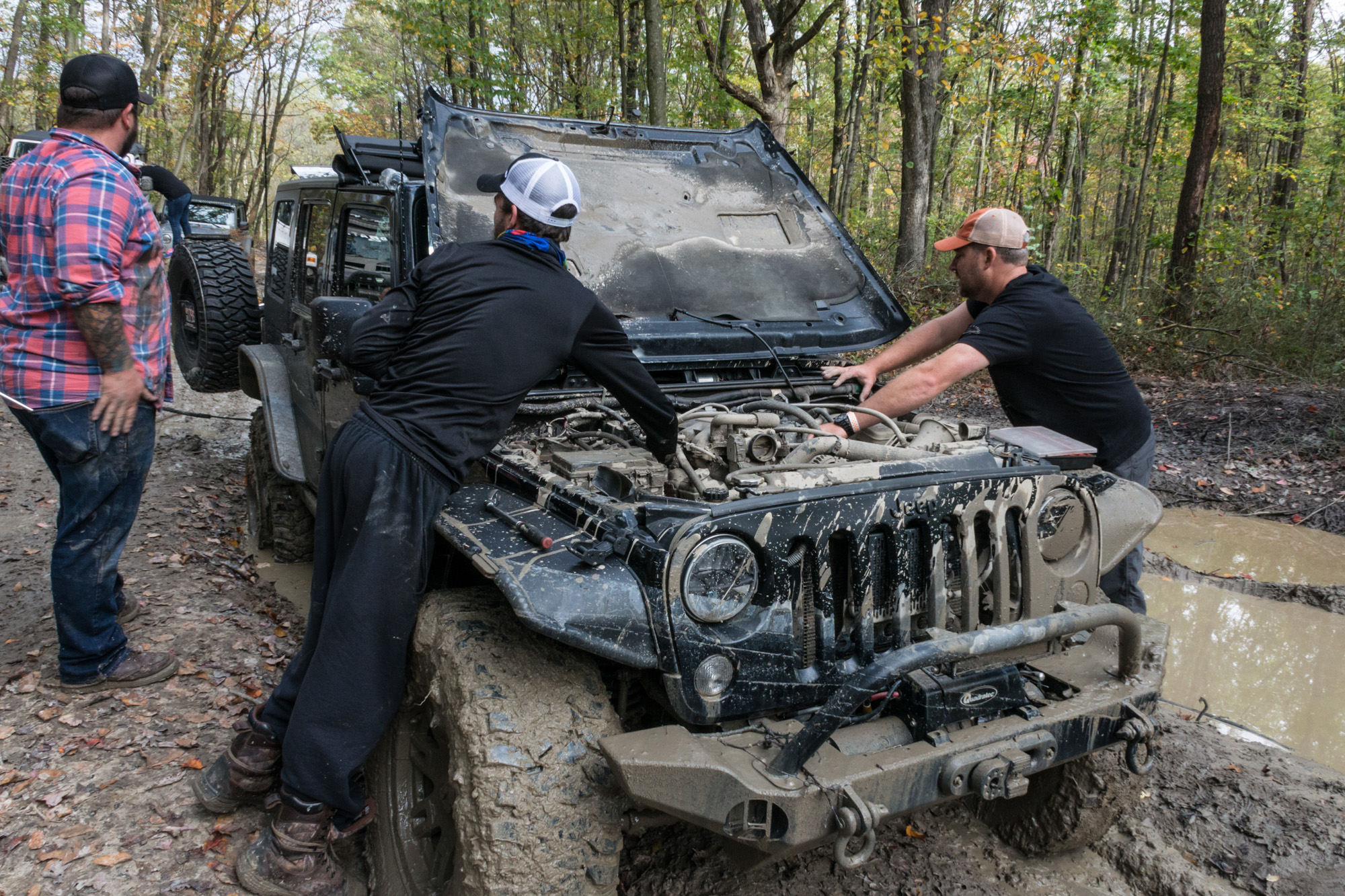
Clothes
When you prepare for a vacation, part of that time is dedicated to packing clothes for the trip, right? Likewise, when you are gearing for some time off pavement, a spare set of clothes (at the very least) should be in your plans. This should include extra stuff like a spare set of socks and shoes as well.
If you’ve never been off-roading before, the time spent on a trail isn’t like climbing aboard an amusement park ride — where you stay inside the ride for its entire duration. When you are on the trail, you’ll make frequent stops for a variety of reasons. This could mean because someone has a vehicle problem, or an obstacle needs to be inspected. Maybe even a scenery stop to get the camera.
When you stop, there is no guarantee the ground around you is going to be pristine, either. There could be shoe-swallowing mud, lots of loose dirt, puddled water with no bypass, or large dirty rocks you need to navigate. Not to mention it may also be raining or snowing.
So making sure you dress appropriately for day’s conditions is important, but backing up that outfit with dry replacements can turn a uncomfortable mess into something much more manageable. And comfortable.
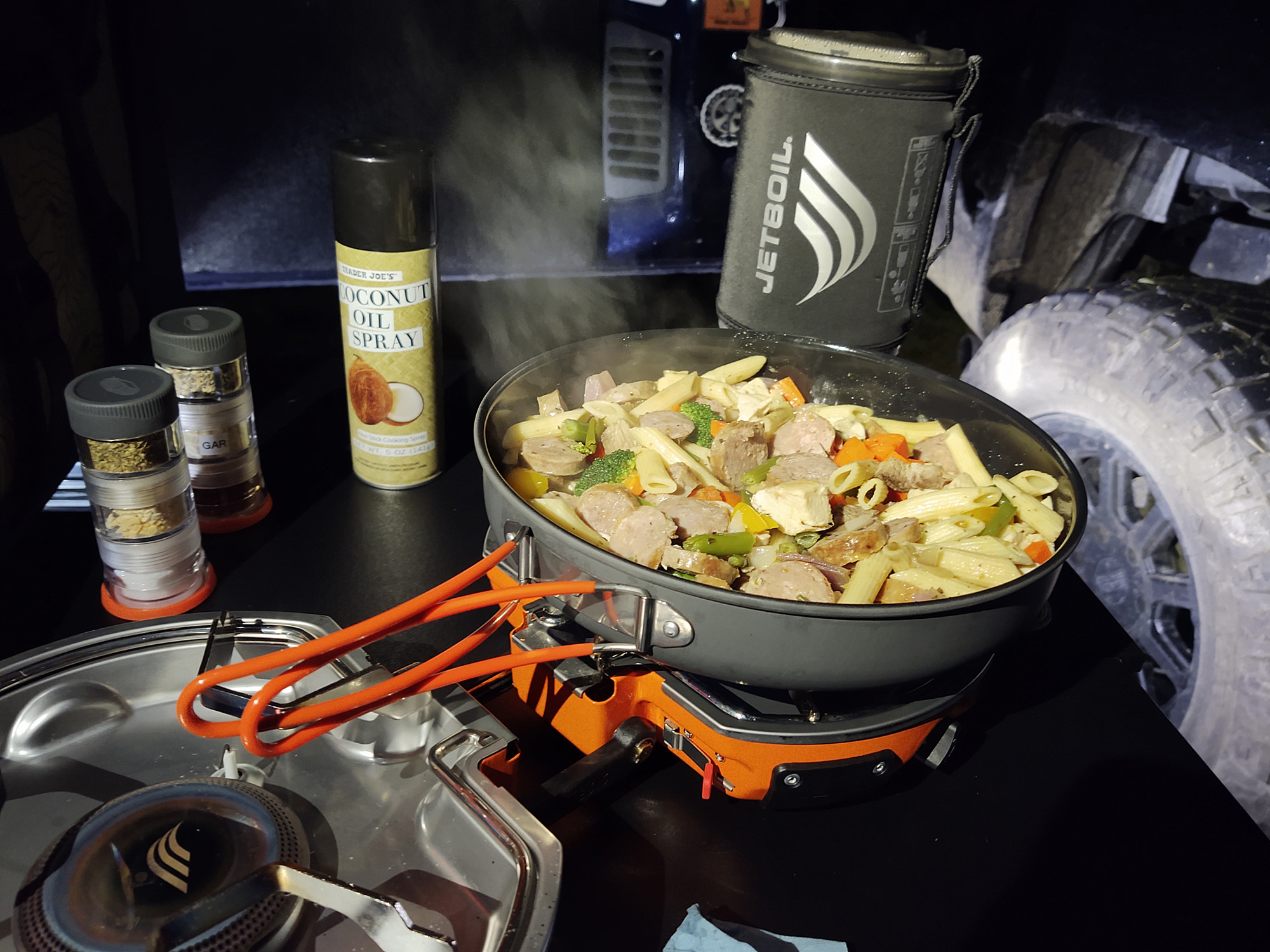
Food
Off-road driving is something by its very nature that, well, takes you off the road. And when you do, there isn’t somewhere on the side of the trail to stop and order lunch or a snack. This is why preparing for your off-pavement day by putting together some meals, before you leave, will save you from an afternoon marked by an angry, growling stomach.
It doesn’t even need to anything fancy, either. Deli sandwiches work great, maybe a salad, soup stashed in a thermos, or some other easy to make (and store) meal. And while your Jeep does not have a tremendous amount of storage space, a simple insulated bag can keep everything together until mealtime. For those planning on longer trips, there are even coolers and fridge freezers available to keep all kinds of ingredients fresh and safe. Please remember to also stash any trash following the meal because treading lightly out there is supremely important.
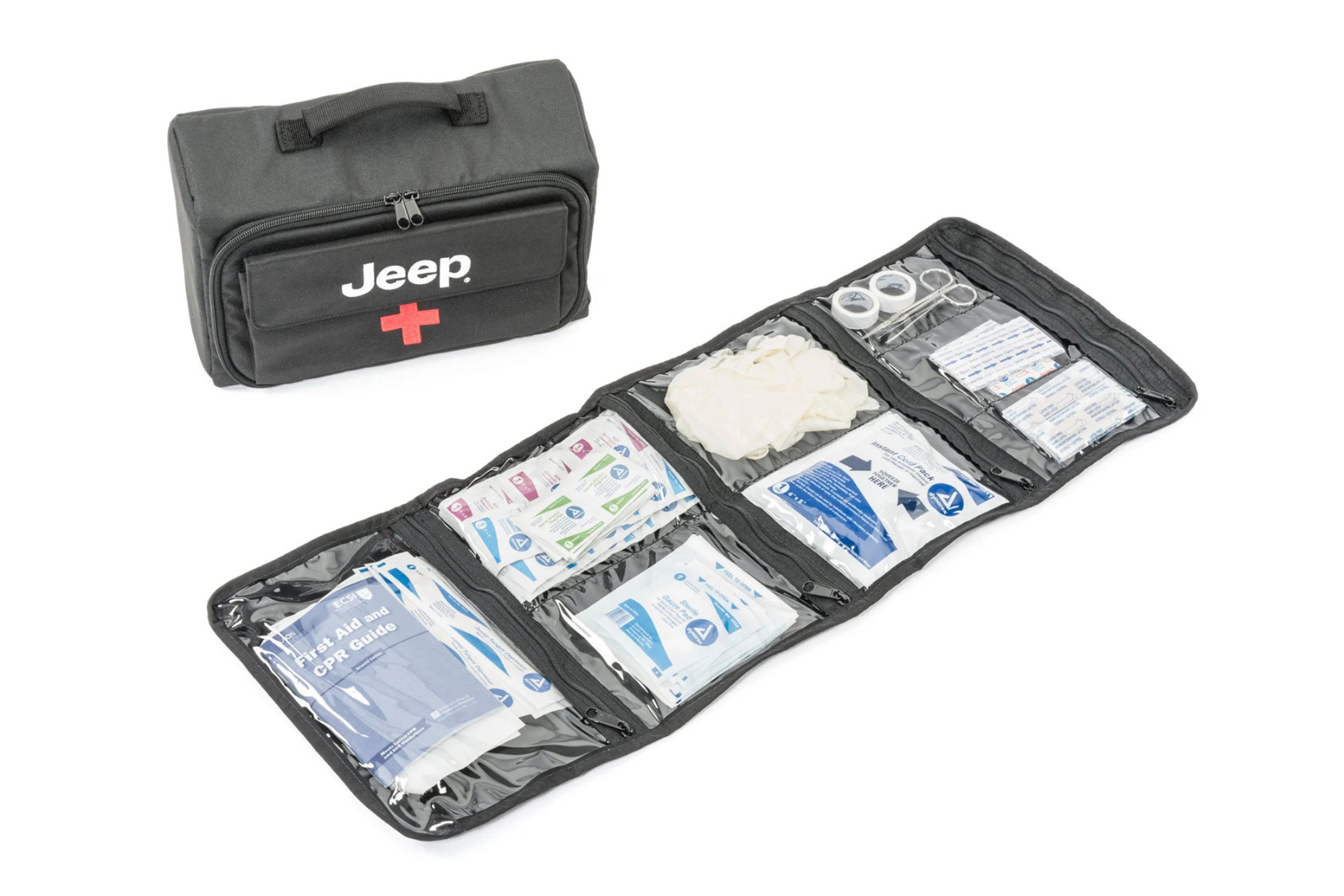
First Aid Kit
You may be excited to spend a fun, challenging day on the trail with your best friends. And you should be excited. However you should also be mindful as accidents can happen. Not (hopefully) the vehicle kind, but something as innocent as a cut from a rogue branch or thorny bush, a blister or scrapes from moving rocks, up to a sprained ankle. Or worse.
So creating, and storing, a proper first aid kit is definitely something to do before you head anywhere off-road. Being prepared for minor (and especially major) emergencies will give you peace of mind knowing you can handle anything from scrapes and cuts to cooking burns, or even strains and sprains.
An inclusive first aid kit should involve items like ice packs, gauze pads, alcohol wipes, bandages, first-aid tape, tongue depressors, vinyl gloves, antiseptic wipes, scissors and tweezers—all grouped together inside an easily accessible storage bag so you aren’t looking here or there for what you need. Also helpful would be an instruction kit providing basic first aid tips for anyone who may be performing the treatment.
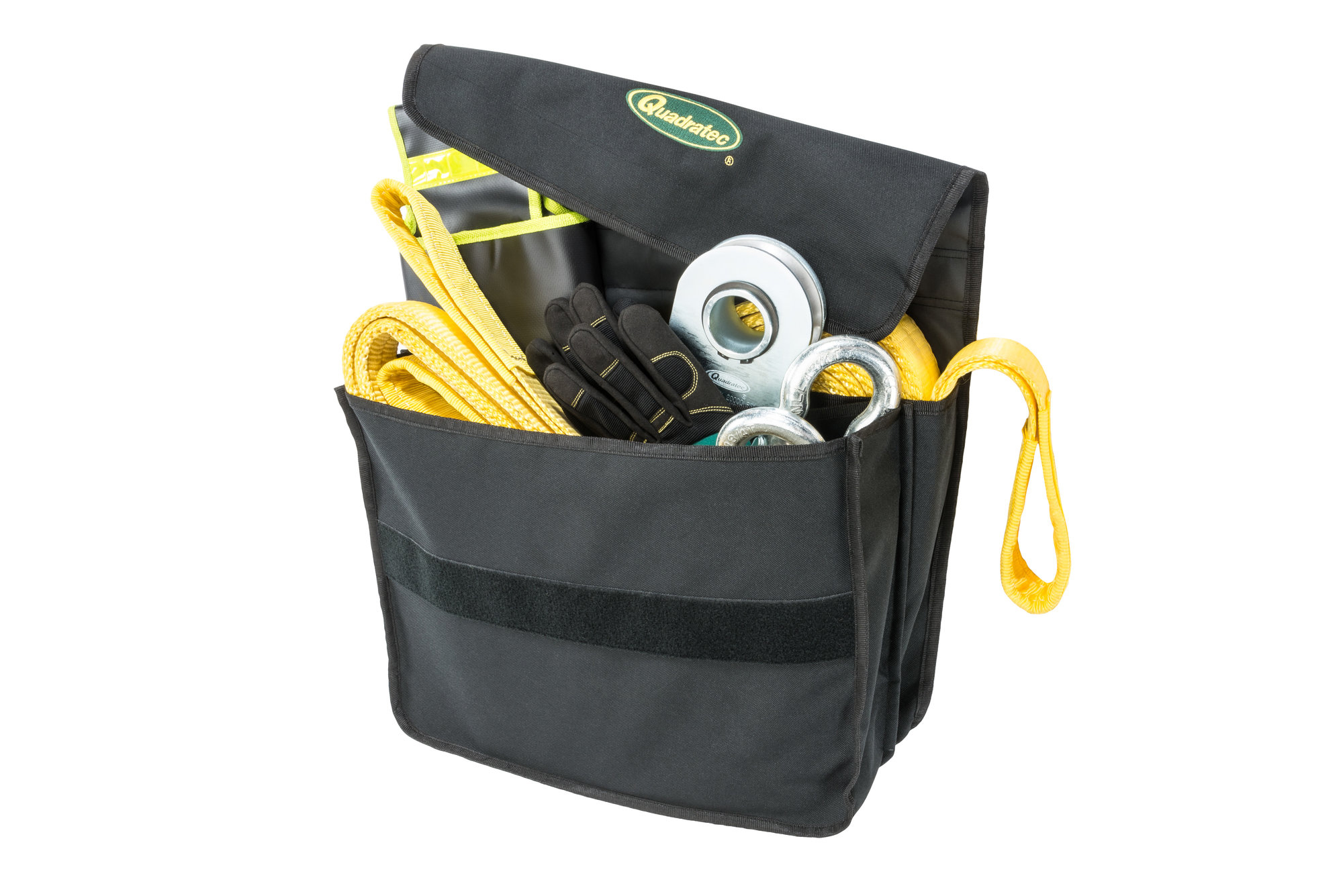
Recovery Gear
While placing a winch on the front of your Jeep is certainly recommended to ensure that time off-road goes as smooth as possible, it is not usually required. However, you should certainly have at least some basic recovery items packed in your Jeep before leaving on a trip. Just in case.
At the very least, you should have recovery points on the front and rear of the vehicle. Usually, these are attached to the Jeep’s bumpers and may either be D-rings or tow hooks. However, some older Jeeps did not offer these on factory bumpers, in which case a good aftermarket bumper system will ensure you have the capability you need.
Proper recovery items also include protective gloves, a tow strap, D-rings, snatch blocks and a tree trunk protector. All things that you, or someone in your trail group, can use in most recovery situations. These items can be purchased separately, or most are available in an inclusive recovery kits that also include a handy storage bag so everything isn’t strewn all over your vehicle’s cargo area.
Sure, someone else may have these same items, or similar ones, but why take that chance. Having the proper equipment on hand definitely saves time should you need to recover your vehicle, or assist someone in front or back of you.
Related Articles:
What Are The Differences In Jeep Seat Cover Materials












